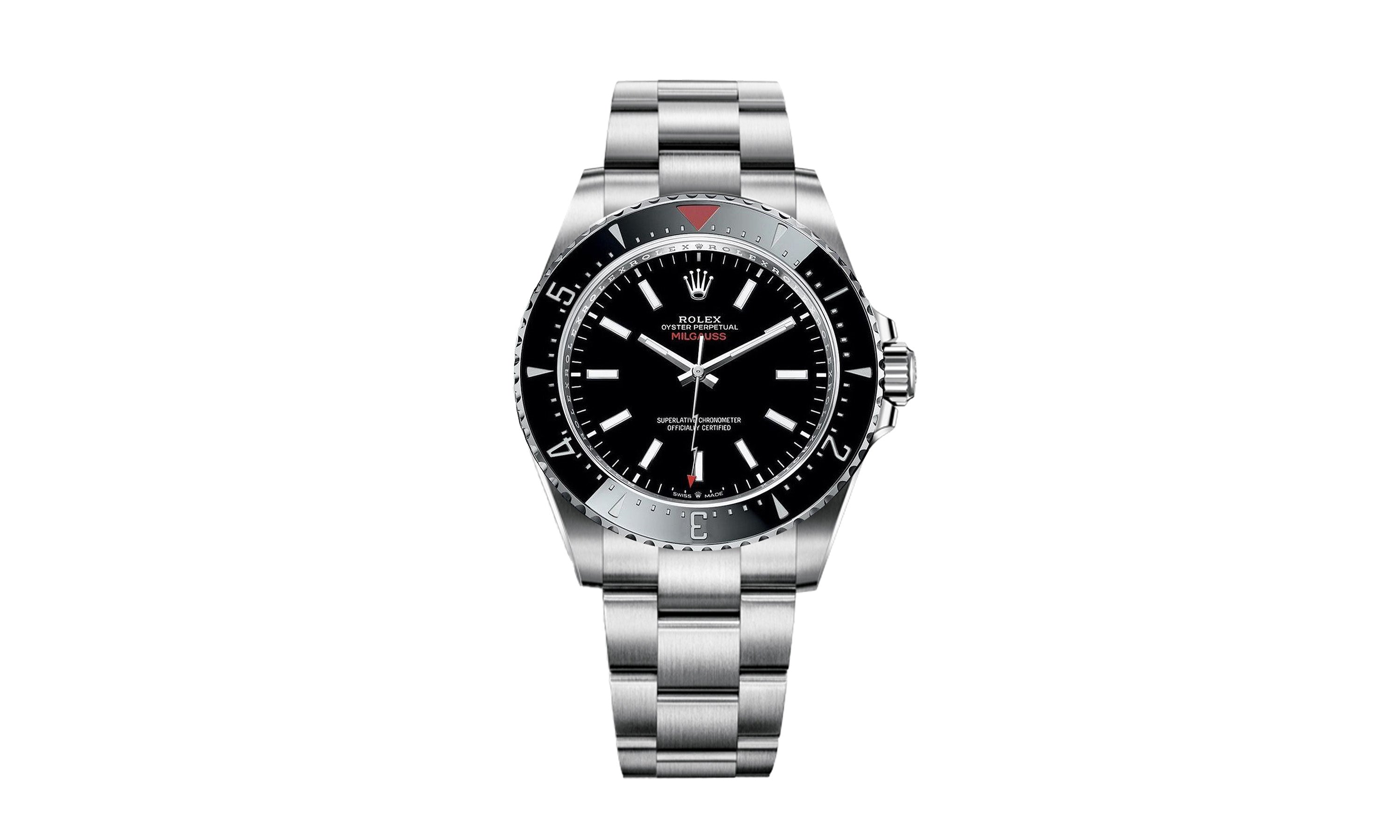Rolex Predictions 2024: Milgauss Returns With New Patented Tech

Last year, Rolex quietly discontinued the Milgauss: their antimagnetic time-only watch originating in the mid-1950s. In the years leading up to its discontinuation, the Milgauss desperately needed a refresh: the watch had gone unchanged since 2007. With Rolex’s recent anti-magnetism patent making the rounds, talk of a new Milgauss is alive and well. Let’s discuss what a new Milgauss could look like, how the aforementioned patent might play into the watch’s design, and how likely it is we’ll see one at Watches and Wonders Geneva 2024.
A New Rolex Milgauss: What Could it Look Like?

Digital rendering of potential new Milgauss with rotating bezel.
Of course, the answer to this question will change depending on who you ask. Some demand a rotating bezel a la the original Milgauss ref. 6541. Others insist that a Milgauss revival should utilize the Air-King’s new case, introducing crown guards while retaining the dial design and color palette of the most recent generation. Purists will claim that, due to the Milgauss’ historic use of an iron Faraday cage (essentially an internal antimagnetic chamber), any future Milgauss should do the same. However, the advent of amagnetic/paramagnetic hairsprings (namely those made of silicon) has rendered this bulky Faraday cage obsolete. Furthermore, a 2023 patent from one Rolex SA takes material-driven anti-magnetism to the next level, perhaps indicating the revival of the Milgauss.
Rolex’s Anti-Magnetic Balance Wheel Patent

Image Source: database.ipi.ch
Rolex has been using paramagnetic hairsprings (Parachrom) since 2000 and amagnetic hairsprings (Syloxi) since 2014. This is nothing new. However, a patent filed in 2022 (published in 2023) details a balance wheel innovation that nearly doubles the anti-magnetism of any existing Rolex watch. Instead of using a copper-beryllium alloy – the current material used for all Rolex balance wheels – Rolex decided to test a lead-free brass material referred to as “Eco-brass”. The results, as stated in the patent, were “surprising and unexpected”. The watch was able to withstand up to 40,000 gauss, nearly double that of the 22,500 gauss withstood by current Rolex sports models. In short, Rolex made (and patented) a significant improvement in anti-magnetism simply by opting for a new material. With anti-magnetism at the core of the Milgauss line, could this innovation indicate a revival?
Will We See a New Rolex Milgauss in 2024?

Image Source: watchpro.com
I think it’s completely feasible that we see a new Milgauss at Watches and Wonders 2024. If we do, I expect it to take after the most recent generation: lightning bolt seconds hand, orange (maybe red) accents, a fixed and polished bezel, and hopefully, an optional green-tinted sapphire crystal. So what will be different? I predict that Rolex will ditch the Faraday cage, making for a slimmer watch. I wouldn’t be surprised nor upset if they used the new Air-King case, as many have predicted. In lieu of the Faraday cage, Rolex will opt for either a Syloxi (silicone) hairspring or a Parachrom (paramagnetic metalloid) hairspring paired with a Chronergy escapement. Only time will tell if this “Ecobrass” balance wheel will make it into a 2024 release. Whenever these balance wheels do arrive, I expect them to appear in more watches than just the Milgauss. That said, I think it makes sense for Rolex to wait on the Milgauss’ release to introduce this technology. I hope it happens this April in Geneva!






Leave a comment